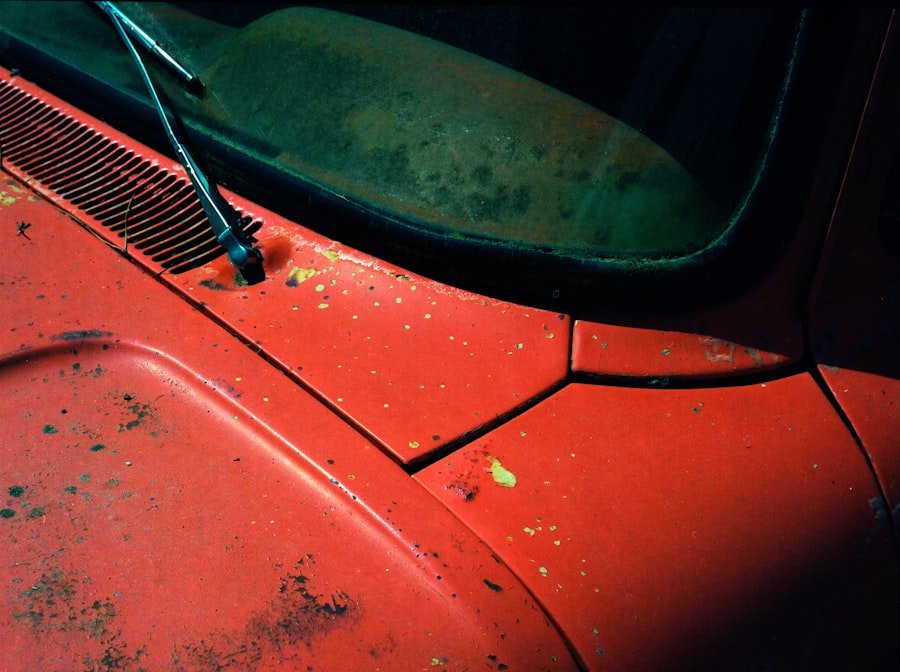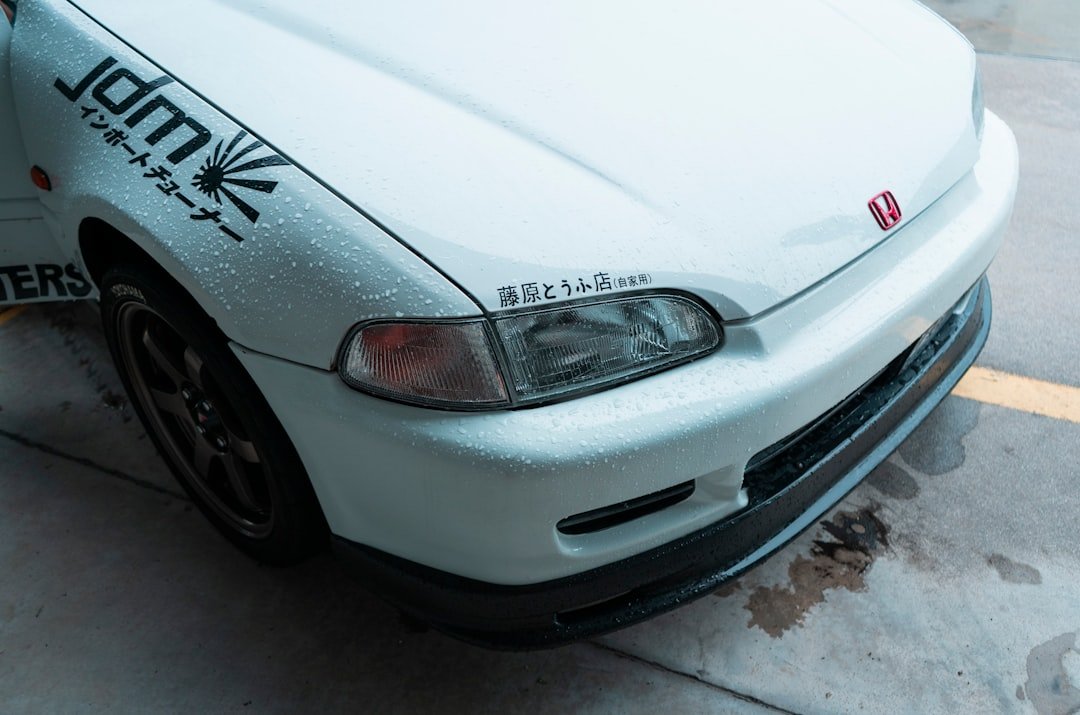Car wax serves as a protective barrier between your vehicle’s paint and the elements. It plays a crucial role in maintaining the aesthetic appeal of your car while also safeguarding it from environmental damage. Over time, exposure to UV rays, bird droppings, tree sap, and road grime can lead to oxidation and dullness in the paint.
By applying wax, you create a shield that not only enhances the shine but also helps prevent these harmful substances from adhering to the surface. This protective layer can significantly extend the life of your car’s paint job, preserving its value and appearance. Moreover, the application of car wax can make routine cleaning easier.
A well-waxed surface repels dirt and grime, allowing for a more straightforward wash process. When contaminants do not bond as strongly to the paint, they can be removed with less effort, reducing the risk of scratches during cleaning. This ease of maintenance is particularly beneficial for car owners who want to keep their vehicles looking pristine without investing excessive time and energy into upkeep.
Key Takeaways
- Car wax helps protect your car’s paint from environmental damage and gives it a glossy finish
- There are different types of car wax including natural, synthetic, and spray-on waxes
- Consider factors such as durability, ease of application, and budget when choosing car wax
- Apply car wax in a cool, shaded area using a clean applicator and microfiber cloth
- Some top car waxes on the market include Meguiar’s Ultimate Liquid Wax, CarGuys Hybrid Wax Sealant, and Collinite 845 Insulator Wax
Different Types of Car Wax
Natural Waxes
Natural waxes, such as carnauba wax, are derived from the leaves of the Brazilian carnauba palm. Known for their deep gloss and warm shine, these waxes are favored by enthusiasts who prioritize aesthetics. However, they may require more frequent reapplication due to their susceptibility to environmental factors.
Synthetic Waxes
Synthetic waxes, on the other hand, are engineered products that often contain polymers and other advanced materials. These waxes provide a longer-lasting protective layer compared to natural options. They are designed to withstand harsh weather conditions and resist fading from UV exposure. Many synthetic waxes also offer enhanced water beading properties, which can help keep your vehicle cleaner for longer periods.
Hybrid Waxes
Hybrid waxes combine the best features of both natural and synthetic options. They aim to deliver the rich shine associated with carnauba while also providing the durability and longevity of synthetic formulations. This versatility makes hybrid waxes an appealing choice for many car owners who seek a balance between aesthetics and protection.
Factors to Consider When Choosing Car Wax

When selecting the right car wax for your vehicle, several factors come into play. One of the primary considerations is the type of finish on your car’s paint. For instance, if your vehicle has a matte finish, you will need a specialized wax designed for that surface to avoid altering its appearance.
Conversely, glossy finishes can benefit from a variety of wax types, including both natural and synthetic options. Another important factor is the climate in which you live. If you reside in an area with extreme weather conditions—such as intense sun exposure or heavy rainfall—choosing a wax with superior durability becomes essential.
Synthetic waxes often excel in these environments due to their resistance to fading and their ability to repel water effectively.
The ease of application is also a significant consideration. Some waxes come in paste form, while others are available as liquids or sprays. Liquid waxes tend to be easier to apply and remove, making them suitable for beginners or those looking for a quick solution.
Paste waxes may require more effort but can provide a deeper shine when applied correctly. Ultimately, your personal preferences and experience level will guide your choice.
How to Apply Car Wax
| Steps | Details |
|---|---|
| 1 | Wash the car thoroughly to remove dirt and grime. |
| 2 | Dry the car completely with a clean microfiber cloth. |
| 3 | Apply a small amount of car wax to a foam applicator pad. |
| 4 | Spread the wax onto the car’s surface in a circular motion. |
| 5 | Allow the wax to dry to a haze, then buff it off with a clean microfiber cloth. |
| 6 | Repeat the process for the entire car, working in small sections. |
| 7 | Enjoy the shiny and protected finish of your car! |
Applying car wax is a straightforward process that can yield impressive results when done correctly. Begin by washing your vehicle thoroughly to remove any dirt or contaminants that could interfere with the waxing process. It’s essential to dry the car completely before applying wax; any moisture left on the surface can hinder adhesion and lead to uneven results.
Once your vehicle is clean and dry, choose an applicator pad or microfiber cloth for applying the wax. If you’re using paste wax, scoop a small amount onto the applicator; for liquid wax, apply a few drops directly onto the pad. Work in small sections, applying the wax in circular motions or straight lines, depending on the manufacturer’s instructions.
Allow the wax to haze over before buffing it off with a clean microfiber towel. This step is crucial as it ensures that you achieve an even finish without streaks or residue. After buffing off the haze, inspect your work under different lighting conditions to ensure even coverage.
If necessary, apply a second coat for added protection and shine. Remember that patience is key; rushing through the process can lead to subpar results. Taking your time will not only enhance the appearance of your vehicle but also ensure that it is adequately protected against environmental elements.
Top 5 Car Waxes on the Market
Several car wax products stand out in today’s market due to their performance and user satisfaction. One notable option is Meguiar’s Gold Class Carnauba Plus Wax, which combines natural carnauba with synthetic polymers for a deep shine and long-lasting protection. This product is well-regarded for its ease of application and impressive results.
Another popular choice is Chemical Guys Butter Wet Wax, known for its exceptional gloss and hydrophobic properties. This liquid wax is easy to apply and provides a high level of protection against UV rays and contaminants while enhancing the vehicle’s shine. For those seeking a synthetic option, Collinite 845 Insulator Wax is often recommended for its durability and resistance to harsh weather conditions.
This product is particularly favored by enthusiasts who want long-lasting protection without sacrificing shine. Turtle Wax Ice Seal N Shine is another excellent choice that offers both ease of use and impressive results. This spray-on product provides instant shine and protection while being safe for all surfaces, including glass and plastic.
Lastly, Griot’s Garage Best of Show Wax is celebrated for its deep gloss finish and ease of application. This paste wax is designed for those who want a professional-grade shine without needing extensive experience in waxing.
DIY Car Waxing Tips

For those who prefer a hands-on approach to car care, DIY waxing can be both rewarding and effective. One essential tip is to work in a shaded area or during cooler parts of the day; applying wax in direct sunlight can cause it to dry too quickly, making it difficult to buff off evenly. Additionally, ensure that your vehicle’s surface is cool to the touch before starting the waxing process.
Using high-quality applicators can make a significant difference in achieving optimal results. Microfiber applicator pads are gentle on paint surfaces and help distribute wax evenly without scratching. When buffing off excess wax, opt for clean microfiber towels that won’t leave lint behind; this attention to detail will enhance the final appearance of your vehicle.
Another useful tip is to break down the waxing process into manageable sections rather than attempting to cover large areas at once. This approach allows you to focus on achieving an even application without feeling rushed. After completing one section, step back and assess your work before moving on; this practice helps ensure that you maintain consistency throughout the entire vehicle.
Benefits of Using Car Wax
The benefits of using car wax extend beyond mere aesthetics; they encompass protection, maintenance ease, and even potential financial savings over time. One of the most significant advantages is that waxing creates a barrier against harmful environmental elements such as UV rays, acid rain, bird droppings, and tree sap.
Additionally, regular waxing can enhance your vehicle’s resale value. A well-maintained exterior with a glossy finish signals to potential buyers that the car has been cared for properly. This attention to detail can translate into higher offers when it comes time to sell or trade in your vehicle.
Furthermore, waxing contributes to easier cleaning routines. A well-waxed surface repels dirt and grime more effectively than an unwaxed one, meaning that routine washes require less effort and time. This convenience is particularly appealing for busy individuals who want their vehicles looking great without dedicating excessive hours to maintenance.
Common Mistakes to Avoid When Waxing Your Car
While waxing may seem straightforward, several common mistakes can undermine your efforts and lead to unsatisfactory results. One prevalent error is failing to properly clean the vehicle before application; any dirt or debris left on the surface can cause scratches during waxing or buffing processes. Always ensure that your car is thoroughly washed and dried before applying any product.
Another mistake involves applying too much product at once. Many novice users believe that more wax equates to better protection; however, this can lead to uneven application and difficulty in buffing off excess material. Instead, use a small amount of product on your applicator pad and build up layers gradually as needed.
Additionally, neglecting to follow manufacturer instructions can result in subpar performance or damage to your vehicle’s finish. Each product may have specific guidelines regarding application techniques or drying times; adhering closely to these recommendations will yield better outcomes.
How Often Should You Wax Your Car
The frequency with which you should wax your car depends on several factors including climate conditions, driving habits, and personal preferences regarding appearance. Generally speaking, most experts recommend waxing every three months as a standard practice for optimal protection and shine. If you live in an area with harsh weather conditions—such as extreme heat or heavy rainfall—you may need to increase this frequency due to accelerated wear on the protective layer provided by wax.
Conversely, if your vehicle is primarily garaged or used infrequently, you might find that waxing every six months suffices. It’s also essential to consider how often you wash your car; frequent washes can wear down the protective layer more quickly than infrequent cleaning sessions. Monitoring your vehicle’s appearance will help you determine when it’s time for another application; if you notice that water no longer beads on the surface or if the paint appears duller than usual, it’s likely time for a fresh coat of wax.
Professional Car Waxing Services
For those who prefer not to tackle waxing themselves or seek a higher level of expertise, professional car waxing services are widely available. These services often utilize high-quality products and advanced techniques that may not be accessible to the average consumer. Professional detailers typically have extensive experience in assessing paint conditions and selecting appropriate products tailored specifically for each vehicle type.
One advantage of opting for professional services is that they often include additional detailing steps beyond just waxing—such as clay bar treatments or paint correction—that can significantly enhance your vehicle’s overall appearance. These processes help remove embedded contaminants from the paint surface before applying wax, resulting in a smoother finish with greater depth of shine. While professional waxing services may come at a higher cost than DIY methods, many car owners find value in the time saved and quality achieved through expert care.
For those with luxury vehicles or classic cars where maintaining pristine condition is paramount, investing in professional detailing can be well worth it.
FAQs About Car Waxing
Car waxing often raises numerous questions among vehicle owners seeking clarity on best practices and product choices. One common inquiry revolves around whether it’s necessary to use a specific type of wax for different colors of paint; while some products are marketed toward specific colors (like dark or light), most high-quality waxes are formulated to work effectively across various shades without causing discoloration. Another frequently asked question pertains to whether waxing can remove scratches or swirl marks from paint surfaces; while waxing can temporarily mask minor imperfections by filling them in with product residue, it does not actually repair damage.
For deeper scratches or swirl marks requiring correction, additional steps such as polishing may be necessary before applying wax. Many people also wonder about compatibility between different brands of products; generally speaking, mixing brands should not pose significant issues as long as each product is compatible with automotive finishes—however, it’s always wise to conduct patch tests when trying new combinations. In conclusion, understanding car waxing—from its importance and types available to application techniques—can empower vehicle owners with knowledge that enhances both appearance and longevity of their cars’ finishes.
If you are looking for the best car wax to keep your vehicle looking shiny and protected, you may also be interested in learning how to perfect the art of searing scallops for a golden crust. Check out this article on
